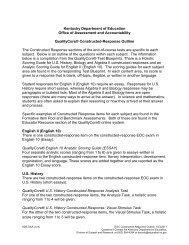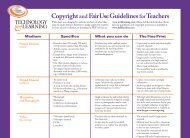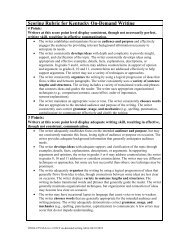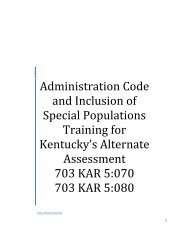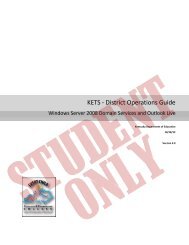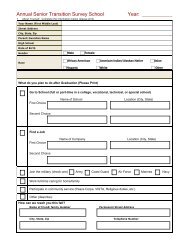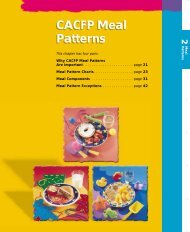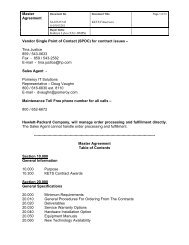Standards with Progressions grades K-HS v. 1.3 - Kentucky ...
Standards with Progressions grades K-HS v. 1.3 - Kentucky ...
Standards with Progressions grades K-HS v. 1.3 - Kentucky ...
- No tags were found...
Create successful ePaper yourself
Turn your PDF publications into a flip-book with our unique Google optimized e-Paper software.
Geometry<br />
Grade 3 Grade 4 Grade 5<br />
Reason <strong>with</strong> shapes and their attributes.<br />
3.G.1:<br />
3.G.2:<br />
Understand that shapes in different categories<br />
(e.g., rhombuses, rectangles, and others) may<br />
share attributes (e.g., having four sides), and that<br />
the shared attributes can define a larger<br />
category (e.g., quadrilaterals). Recognize<br />
rhombuses, rectangles, and squares as examples<br />
of quadrilaterals, and draw examples of<br />
quadrilaterals that do not belong to any of these<br />
subcategories.<br />
Partition shapes into parts <strong>with</strong> equal areas.<br />
Express the area of each part as a unit fraction of<br />
the whole. For example, partition a shape into 4<br />
parts <strong>with</strong> equal area, and describe the area of<br />
each part as 1/4 of the area of the shape.<br />
Draw and identify lines and angles, and<br />
classify shapes by properties of their<br />
lines and angles.<br />
4.G.1: Draw points, lines, line segments,<br />
rays, angles (right, acute, obtuse),<br />
and perpendicular and parallel<br />
lines. Identify these in twodimensional<br />
figures.<br />
4.G.2: Classify two-dimensional figures<br />
based on the presence or<br />
absence of parallel or<br />
perpendicular lines, or the<br />
presence or absence of angles of<br />
a specified size. Recognize right<br />
triangles as a category, and<br />
identify right triangles.<br />
4.G.3: Recognize a line of symmetry for<br />
a two-dimensional figure as a line<br />
across the figure such that the<br />
figure can be folded along the<br />
line into matching parts. Identify<br />
line-symmetric figures and draw<br />
lines of symmetry.<br />
Graph points on the coordinate plane to solve realworld<br />
and mathematical problems.<br />
5.G.1:<br />
5.G.2:<br />
Use a pair of perpendicular number lines,<br />
called axes, to define a coordinate system, <strong>with</strong><br />
the intersection of the lines (the origin)<br />
arranged to coincide <strong>with</strong> the 0 on each line<br />
and a given point in the plane located by using<br />
an ordered pair of numbers, called its<br />
coordinates. Understand that the first number<br />
indicates how far to travel from the origin in<br />
the direction of one axis, and the second<br />
number indicates how far to travel in the<br />
direction of the second axis, <strong>with</strong> the<br />
convention that the names of the two axes and<br />
the coordinates correspond (e.g., x-axis and x-<br />
coordinate, y-axis and y-coordinate).<br />
Represent real world and mathematical<br />
problems by graphing points in the first<br />
quadrant of the coordinate plane, and<br />
interpret coordinate values of points in the<br />
context of the situation.<br />
Classify two-dimensional figures into categories based<br />
on their properties.<br />
5.G.3:<br />
5.G.4:<br />
Understand that attributes belonging to a<br />
category of two-dimensional figures also<br />
belong to all subcategories of that category.<br />
For example, all rectangles have four right<br />
angles and squares are rectangles, so all<br />
squares have four right angles.<br />
Classify two-dimensional figures in a hierarchy<br />
based on properties.<br />
<strong>Kentucky</strong> Department of Education<br />
22 | P a g e




